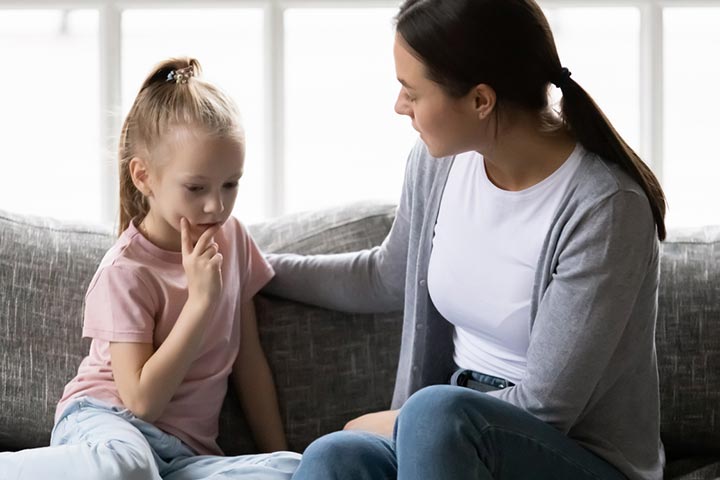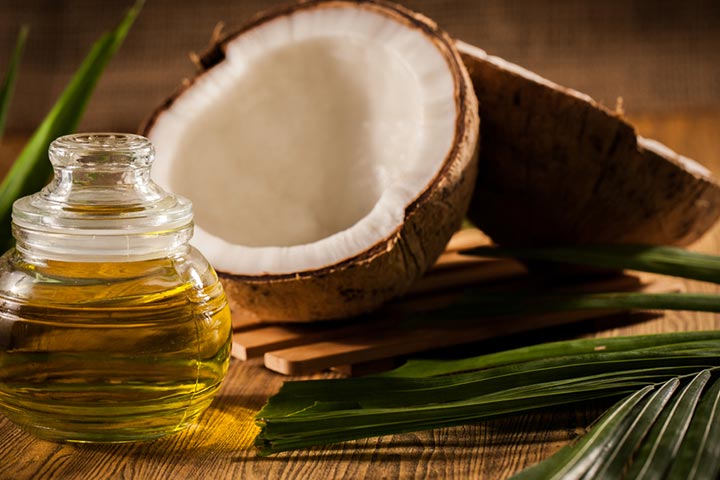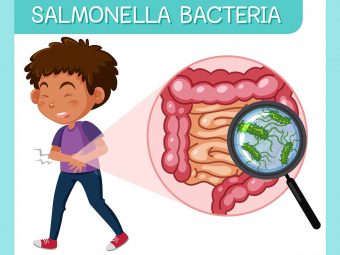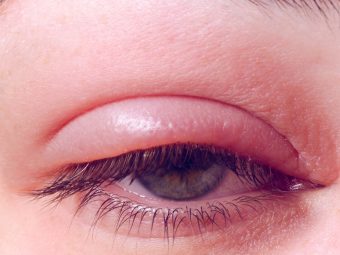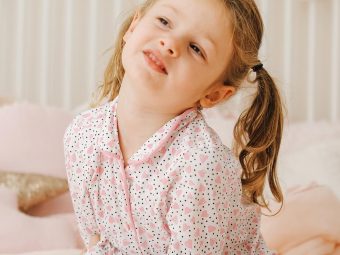
Image: ShutterStock
Cases of hair loss in children account for about three percent of the visits to the pediatrician, as stated by the American Hair Loss Association (AHLA).Although it is common for children to lose their temporary hair overtime before the growth of permanent hair, losing hair at an increased rate and the appearance of bald patches might be a cause for concern.Even though the early loss of hair in children can be managed with the help of proper treatment, care and medications, it can initially be heart-wrenching to see your child lose so much hair at such a young age. The most common causes of this problem in kids include infections (bacterial or viral), effects of antibiotics, or pediatric alopecia. According to the AHLA, pediatric alopecia can be managed with the help of a proper diagnosis(1). Read on to know more about what causes hair loss in kids and ways to manage them.
Medical Causes Of Hair Loss In Children
脱发的原因,在孩子头发稀疏dren could be because of an underlying condition or consumption of a few medications. So, when the conditions are treated or the medication discontinued, chances are the hair loss might get controlled.
1. Vitamin deficiency
Vitamin and mineral deficiencycan affect the hair structure and hair growth. This could also be one of the underlying causes for acute telogen effluvium (characterized by a sudden decrease in weight and reduced protein intake), and diffuse alopecia, which is due to niacin deficiency.Studies also reported an association between nutritional deficiency and chronic telogen effluvium and alopecia areata(2).
Signs
- Significant increase in hair loss
- Other nutritional deficiencies such as brittle nails, dry skin
- Fatigue, weight loss
- Mouth ulcers and cracks in the corners of the mouth
Treatment: Treating vitamin deficiency could help in controllinghair loss.Here are some of the important vitamins for hair growth and their dietary sources(3)
| Vitamin | Dietary source |
|---|---|
| Vitamin A | Eggs, fortified skim milk, orange and yellow vegetables, fruits, broccoli, spinach, and dark leafy vegetables (4) |
| Vitamin B | Eggs, almonds, sunflower seeds, oatmeal, apple, whole wheat bread, spinach, broccoli, plain yogurt (5) |
| Vitamin C | Citrus fruits, potatoes, tomatoes, green peppers and cabbage (3) |
| Vitamin D | Salmon, tuna fish, fortified milk, eggs (6) |
| Iron | Dried beans, dry fruits, whole grains, spinach, fruits, and vegetables (7) |
| Zinc | Pumpkin seeds, chickpeas, oatmeal, almonds, kidney beans, milk (8) |
Sometimes, your child’s doctor may also prescribe supplements.
2. Tinea capitis
Tinea capitis orringworm of the scalpis the most common cause of hair loss in children. This is a contagious and superficial fungal infection that can affect the scalp, eyebrows, and eyelashes.
Signs:
- Single or multiple patches of hair loss on the scalp
- Black dot-like pattern of patches
- Inflammation, scaling, and itching
- Sometimes, there are pus containing blisters(9)
Note:These signs are useful for preliminary identification by the parent. However, your child’s doctor may use other clinical techniques to diagnose.
Treatment: The doctor might prescribe topical antifungal creams and antifungal shampoos.Children who are under treatment may not be contagious, so they could be sent to school after starting the treatment(3).
You can prevent this infection by not sharing combs and other hair accessories. Also, do not share pillows or anything that comes into contact with things that could spread the scalp infection.
 Quick fact
Quick fact3. Alopecia areata
Alopecia Areata is anautoimmune diseasethat affects the hair follicles and is one of the hair growth disorders. Children withalopecia areatalose patches of hair and experience childhood balding, but there won’t be any signs of scaling or broken hair.
Signs:
- The sudden appearance of oval patches of baldness on the scalp.
- These patches look smooth and normal.
- Absence of other symptoms such as scaling, broken skin.
- Some people would have tiny pits, dents, grooves, and superficial splitting on the nails.
- Occasional itching, tenderness, and burning sensation might be felt(11).
Treatment:Researchers have not been able to pinpoint the exact cause of this condition, but studies have found that most children with alopecia areata get their hair back within a year or so.
斑秃是不contagious and not curable either, as is the case with most autoimmune diseases.Hair regrowth treatments, however, can help in controlling the disease withcorticosteroidsiXA group of steroid hormones produced in the adrenal cortex that are used to reduce inflammation.and medications to promote hair growth(4).
This will mitigate the risk of developing into alopecia totalis, which is a complete loss of scalp hair, or alopecia universalis, which is the loss of body hair.
 Research finds
Research finds4. Telogen effluvium
In this condition, there is a significant increase in hair fall. Usually, this shows up suddenly and can occur for three months after the onset. Extreme emotional stress, severe trauma or illness, or extreme dieting could be the causes for this condition.
Signs
- An increase in the amount of hair shed is evident when you brush the child’s hair or when the hair is washed.
- Increased hair shedding on the pillow in the morning or around the house.
- Occasional tenderness of the scalp can be felt.
Treatment:一旦孩子恢复正常健康和自由rom any stress, the hair regrows. So, there is no need for any specific treatment. However, you can try various ways to resolve the trigger that is causing the hair loss. Studies show that taking a diet low in vitamin D could help in improving the symptoms(3). The growth and restoration phase takes anywhere between three and six months(12).
5. Trichotillomania
This is yet another stress-related condition where the child is compelled to pull his or her hair. It results in patches of hair loss in children. The condition may not be as evident in the beginning because most children tend to pull their hair at night while sleeping.
Signs
- It has been observed that the areas affected by hair loss are right in the case of right-handed children and left in the case of left-handed children.
- Pulling hair from eyebrows, eyelashes and genital areas (in teenagers)
Treatment:Treating the cause of anxiety or stress, rather than hair fall or loss, prevents this condition. Providing emotional support, squeezing a stress ball in place of pulling hair, cutting the child’s hair short, etc., are a few things that could also be helpful(13).
6. Dandruff orseborrheic dermatitis
Image: Shutterstock
Dandruff is a scalp condition and causes flaky skin on the scalp which is itchy. The flakes are white or yellowish in color. If not treated early, this may result in hair fall.
7. Endocrine problems
In children, hair loss could also bedue to hypothyroidism, a condition where the thyroid hormone is not as active as it should be in the body.
Signs:Along with hair loss, other symptoms of the disorder, such as the presence ofgoiteriXAn unusual swelling in the neck caused by the enlargement of the thyroid gland., constipation, and cold intolerance, might indicate thyroid disorder(14).
Treatment:Treating the underlyingendocrineiXRelated to a system of glands in the body.problem might decrease hair fall and promote hair growth. Your child’s doctor would prescribe the necessary medications after diagnosing the issue.
8. Medications and other treatments
Sometimes, hair loss could be the side-effects of treatments or drugs taken for other medical conditions. Chemotherapy-induced alopecia is one such side-effect.
Signs:
- The onset of hair loss after using the medication(15)
- Loss of hair in patches and thinning of hair
Treatment: Make sure you ask the doctor or research online about the possible side-effects of a drug your child has to take.
Non-Medical Causes Of Hair Loss In Children
Hair loss can also be due to non-medical conditions such as:
9. Newborn hair loss
Image: IStock
Hair loss is normal among newborn children during the first two months, usually followed by the growth of stronger, permanent hair. This is normal and has no accompanying symptoms(16).
10. Rubbing
The constant friction of the scalp with the bed or car seat may result in bald patches on the baby’s scalp, usually occurring in babies between ages three and six months. The hair loss ideally stops, and hair growth begins when the child starts to sit up(17).
11. Traction alopecia and hair abuse
A child’s hair is quite fragile, unlike an adult’s. Traction alopecia is the physical damage to hair caused due to excessive teasing, combing, weaving, braiding, straightening, curling, or bleaching. Something as simple as a tight ponytail hairstyle or cornrows can also damage the delicate hair of a child, while it may not affect an adult the same way(17).
Treatment:Start a hair care routine that includes washing, drying, brushing, and gently combing the hair. This can go a long way in establishing hair care habits that do not result in hair abuse.
 Did you know?
Did you know?Supporting Your Child During Hair Loss
Image: IStock
Hair loss has an emotional impact on a child. It can be embarrassing for some, especially for school-going children, who get bullied for being bald. Along with the treatment, you should also give them emotional support to cope with the changes.
- If the child is old enough to understand, explain why they have hair loss and how it can be handled. Give them clarity about it, so they know what to expect.
- You could help them choose an accessory like a cap or a bandana to cover the shaved head. But do so only if they ask for it because if you offer it proactively, you are indirectly telling them that hair loss is a flaw that needs to be rectified.
- Tell your child he or she looks beautiful the way they are, and there is no shame in not having hair on their head.
- When a child experiences hair-loss, it can be a difficult and emotional experience for them. In such cases, it is important to support their personal choices, including the use of wigs for kids.If the child wants to use wigs in the case of long-term or permanent hair-loss, let them, unless the doctor advises against it (due to fungal infection).
If your child is old enough to understand, tell them that hair or lack of it does not affect the beauty of a person.
Home Remedies To Try For A Healthy Hair
Hair care for children is crucial in maintaining healthy and strong hair.Hair loss due to nutritional deficiency and environmental factors can be prevented with a few precautions. But if hair loss is due to a medical condition, treatment is imperative. Here are a few home remedies that can aid in hair loss treatment.
Note that these remedies won’t cure the condition that is causing hair loss. They only aid in treatment by supplying the necessary nutrition to the body.
- Using coconut oil on a regular basis might enhance lubrication and prevent hair breakage. Conditioning with coconut oil might also give the hair a voluminous look(18).
Image: Shutterstock
- It is believed that olive oil can be used to strengthen the hair and prevent hair fall. You may also try jojoba oil, mustard oil, and neem oil to nourish the hair and prevent hair loss. However, make sure your child is not allergic to these oils.
- According to a study, peppermint oil is found to promote hair growth and could be used for treating hair loss(19).
- Another study states that a combination of various oils with cactus extract oil, coconut oil, canola oil, and olive oil is said to promote hair growth when applied daily(20).
- A healthy diet with foods rich in vitamins A, C and E, zinc, and iron also aid in the treatment.
- You can applyapple cider vinegar六个小时后头皮洗。但是,check with the child’s doctor before trying this.
- Indiangooseberry or amlais one natural remedy you could try. The berry is believed to stimulate follicle growth and strengthen the hair. It is often made into juice, mixed with oil (coconut, jojoba, neem, or almond).
Image: IStock
- It is believed that the sulfur and phenolic compounds in onion juice can help stimulate hair growth. You could try rubbing onion juice on the patches of skin, leave it for 15 minutes, and wash your child’s hair(21).
Remember to gently massage the scalp with clean hands or cotton when applying oils. This might help regulate blood flow to the scalp and enhance hair growth and health. These remedies might help in promoting hair regrowth while the underlying cause is being treated
Frequently Asked Questions
1. How much hair loss is normal for a child?
Losing 50 to 100 strands daily while combing or washing the hair is normal. However, new strands begin to grow, replacing the lost hair(22).
2. Can I stop alopecia from spreading?
Since alopecia is an autoimmune disease, you may not be able to stop the spread of bald patches on the scalp and other parts of the body without proper treatment. Pediatric dermatologists recommend using topical steroids, steroid injections, topical irritants andimmunotherapyiXA type of treatment that uses a person’s immune system to treat certain diseases, such as cancer., topical minoxidil, and other pills to manage the condition(23).
3. Is hair loss in children reversible?
Hair loss in children is typically reversible after treating the underlying issue. Also, for severe hair loss problems such as alopecia areata, the hair may regrow after falling due to specific treatments; permanent scarring or irreversible hair loss is uncommon in children(25).
4. How can schools and other social environments be made more welcoming to children with hair loss?
Spreading awareness about the psychological effects children may experience due to hair loss, among their peers and teachers is crucial. Educating all children about the importance of not bullying or isolating their peers who suffer from hair loss and explaining the significance of kindness can greatly contribute to creating a more inclusive and supportive school and social environment for children with hair loss problems.
Seeing your children with hair loss can be concerning and heartbreaking. Given its medical causes, various deficiencies, or alopecia, it may not always be preventable. However, since it may also occur due to non-medical factors, you may try to avoid those practices and prevent the condition. Irrespective of the cause, timely treatment and proper care can help manage hair loss in children. Apart from the treatment, try to be supportive and understanding to help them get through this phase.
Infographic: Home Remedies For Hair Loss In Children
Hair loss in children can be caused due to medical and non-medical reasons and can be upsetting for both the child and the parents. However, there are several home remedies to manage hair loss and encourage healthy hair development. Scroll through the infographic below to learn about dealing with hair loss in your child.
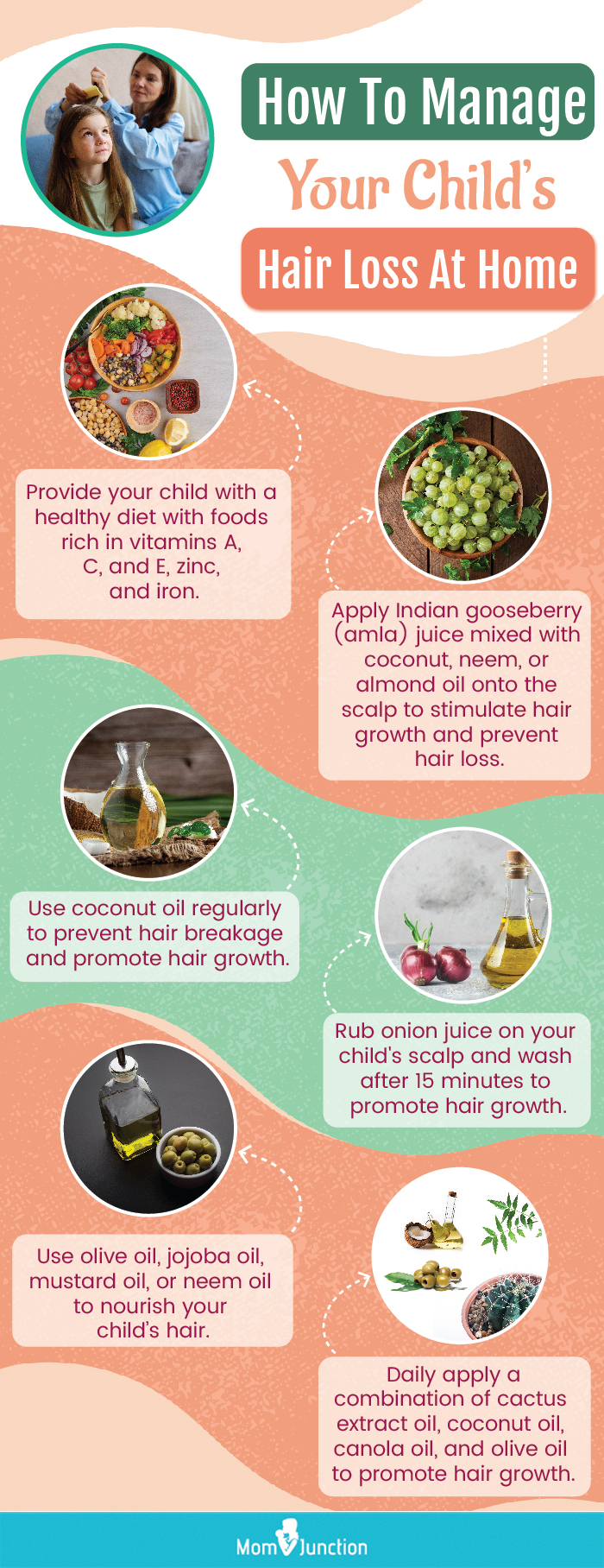
Illustration: Momjunction Design Team
Get high-quality PDF version by clicking below.
Download Infographic
Key Pointers
- Hair loss in children is a common concern, accounting for 3% of pediatrician visits, according to the American Hair Loss Association.
- Some causes of hair loss in children include infections, medications, and pediatric alopecia.
- Medical conditions such as vitamin deficiency, tinea capitis, alopecia areata, and telogen effluvium can also lead to hair loss in children.
- Appropriate treatment and emotional support are critical in addressing hair loss in children.
- While home remedies such as coconut oil, olive oil, and healthy diets may aid hair loss treatment, they may not cure the underlying condition.
References:
- Children’s Hair Loss; American Hair Loss Association
https://www.americanhairloss.org/children_hair_loss/introduction.html - Emily L. Guo and Rajani Katta; Diet and hair loss: effects of nutrient deficiency and supplement use; NCBI(2017)
https://www.ncbi.nlm.nih.gov/pmc/articles/PMC5315033/ - 5. Hind M. Almohanna, Azhar A. Ahmed, John P. Tsatalis,and Antonella Tosti; The Role of Vitamins and Minerals in Hair Loss: A Review; NCBI(2019)
https://www.ncbi.nlm.nih.gov/pmc/articles/PMC6380979/ - Vitamin A; Medline Plus; U.S National Library of Medicine
https://medlineplus.gov/ency/article/002400.htm - Biotin; National Institutes of Health
https://ods.od.nih.gov/factsheets/Biotin-HealthProfessional/ - Vitamin D; National Institutes of Health
https://ods.od.nih.gov/factsheets/VitaminD-HealthProfessional/ - Food Sources of Iron; Dieticians of Canada
https://www.dietitians.ca/Downloads/Factsheets/Food-Sources-of-Iron.aspx - Zinc; National Institutes of Health
https://ods.od.nih.gov/factsheets/Zinc-HealthProfessional/ - Abd-Elaziz El-Taweel, Fatma El-Esawy, and Osama Abdel-Salam; Different Trichoscopic Features of Tinea Capitis and Alopecia Areata in Pediatric Patients; Hindawi
https://www.hindawi.com/journals/drp/2014/848763/ - Causes and Treatments; Children’s Hair Loss; American Hair Loss Association
https://www.americanhairloss.org/children_hair_loss/causes_treatment.html - Alopecia Areata; Harvard Health Publishing
https://www.health.harvard.edu/a_to_z/alopecia-areata-a-to-z - Telogen Effluvium; British Association of Dermatologists
http://www.bad.org.uk/shared/get-file.ashx?id=132&itemtype=document - Trichotillomania (Hair Pulling Disorder); National Health Service
https://www.nhs.uk/conditions/trichotillomania/ - Hair manifestations of endocrine diseases: A brief review; Indian Journal of Dermatology, Venereology and Leprology
http://www.ijdvl.com/article.asp?issn=0378-6323;year=2018;volume=84;issue=5;spage=528;epage=538;aulast=Vinay - Drug Induced Hair Loss; American Hair Loss Association
https://www.americanhairloss.org/drug_induced_hair_loss/ - Liwen Xu, et al.; A Practical Approach to the Diagnosis and Management of Hair Loss in Children and Adolescents; frontiers
https://www.frontiersin.org/articles/10.3389/fmed.2017.00112/full - Hair Loss; Seattle Children’s Hospital
https://www.seattlechildrens.org/conditions/a-z/hair-loss/ - 玛丽亚·费尔南达里斯Gavazzoni二叠纪;头发化妆品: An Overview; NCBI(2015)
https://www.ncbi.nlm.nih.gov/pmc/articles/PMC4387693/ - Ji Young Oh, Min Ah Park, and Young Chul Kim; Peppermint Oil Promotes Hair Growth without Toxic Signs; NCBI
https://www.ncbi.nlm.nih.gov/pmc/articles/PMC4289931/ - Sudhir Sawarkar, Vinay Deshmukh, Sankar Jayaganesh, and Ovureddiar Perumal; Clinical Evaluation of Cactus (Cereus Grandiflorus) Enriched Hair Oil for Hair Fall Disorders; Madridge Journal of Dermatology and Research
https://madridge.org/journal-of-dermatology-and-research/mjdr-1000113.pdf - Anna-Marie Hosking Margit Juhasz Natasha Atanaskova Mesinkovska; Complementary and Alternative Treatments for Alopecia: A Comprehensive Review; Karger
https://www.karger.com/Article/Pdf/492035 - Your Hair.
https://kidshealth.org/en/kids/hair.html#:~:text=About%2050%20to%20100%20hairsthose%20that%20have%20fallen%20out - Alopecia Areata.
https://www.nationwidechildrens.org/conditions/alopecia-areata - Alopecia areata in children.
https://dermnetnz.org/topics/alopecia-areata-in-children - Common causes of paediatric alopecia.
https://www1.racgp.org.au/ajgp/2018/october/common-causes-of-paediatric-alopecia



 Point to consider
Point to consider

